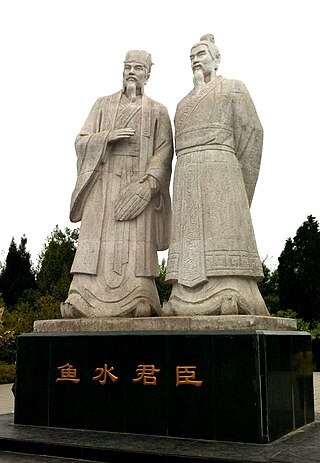Related Research Articles

The Kwa languages, often specified as New Kwa, are a proposed but as-yet-undemonstrated family of languages spoken in the south-eastern part of Ivory Coast, across southern Ghana, and in central Togo. The Kwa family belongs to the Niger-Congo phylum. The name was introduced 1895 by Gottlob Krause and derives from the word for 'people' (Kwa) in many of these languages, as illustrated by Akan names. This branch consists of around 50 different languages spoken by about 25 million people. Some of the largest Kwa languages are Ewe, Akan and Baule.

Japonic or Japanese–Ryukyuan, sometimes also Japanic, is a language family comprising Japanese, spoken in the main islands of Japan, and the Ryukyuan languages, spoken in the Ryukyu Islands. The family is universally accepted by linguists, and significant progress has been made in reconstructing the proto-language, Proto-Japonic. The reconstruction implies a split between all dialects of Japanese and all Ryukyuan varieties, probably before the 7th century. The Hachijō language, spoken on the Izu Islands, is also included, but its position within the family is unclear.

The Yuman–Cochimí languages are a family of languages spoken in Baja California, northern Sonora, southern California, and western Arizona. Cochimí is no longer spoken as of the late 18th century, and most other Yuman languages are threatened.
Guan Suo is a fictional character of the Three Kingdoms period of China. He is often depicted as the third son of the general Guan Yu. He is not mentioned in historical records, and appears only in folk tales and in the historical novel Romance of the Three Kingdoms. He was said to have served in the state of Shu Han as a military general.

The grand chancellor, also translated as counselor-in-chief, chancellor, chief councillor, chief minister, imperial chancellor, lieutenant chancellor and prime minister, was the highest-ranking executive official in the imperial Chinese government. The term was known by many different names throughout Chinese history, and the exact extent of the powers associated with the position fluctuated greatly, even during a particular dynasty.
Guang may refer to:
Proto-Dravidian is the linguistic reconstruction of the common ancestor of the Dravidian languages native to the Indian subcontinent. It is thought to have differentiated into Proto-North Dravidian, Proto-Central Dravidian, and Proto-South Dravidian, although the date of diversification is still debated.

The Jê languages, or Jê–Kaingang languages, are spoken by the Jê, a group of indigenous peoples in Brazil.
In linguistics, upstep is a phonemic or phonetic upward shift of tone between the syllables or words of a tonal language. It is best known in the tonal languages of Sub-Saharan Africa. Upstep is a much rarer phenomenon than its counterpart, downstep.

Pano-Tacanan is a proposed family of languages spoken in Peru, western Brazil, Bolivia and northern Paraguay. There are two close-knit branches, Panoan and Tacanan, with 33 languages. There are lexical and grammatical similarities between the two branches, but it has not yet been demonstrated that these are genetic.

The Chicham languages, also known as Jivaroan is a small language family of northern Peru and eastern Ecuador.

Ghana is a multilingual country in which about eighty languages are spoken. Of these, English, which was inherited from the colonial era, is the official language and lingua franca. Of the languages indigenous to Ghana, Akan is the most widely spoken in the south. Dagbani is most widely spoken in the north.
The Potou–Tano or Potou–Akanic languages are the only large, well-established branch of the Kwa family. They have been partially reconstructed historically by Stewart in 1989 and 2002.
The Guan or Guang people are an ethnic group found almost in all parts of Ghana, including the Krachi people, language-Kaakye people Nkonya tribe, the Gonja, Anum, Anii-Adele, Larteh, Akposo, Nawuri and Ntsumburu. The Guan are believed to have been the first settlers in modern day southern Ghana, migrating from the Mossi region of modern Burkina around 1000 A.D. The Gonja of the Guan are however late settlers in northern Ghana, invading eastern Dagbon in the 1600s, capturing Daboya and many towns.
Gua is a Guang language spoken in many parts of Ghana including the Gonja, in the northern Savannah Region, the Nchumurus in the Northern, Oti and Bono East Regions, the people of Larteh, Okere, Anum and Boso, the people of Winneba, Senya Beraku, Buem, Achode, Nkonya, Krachi, Santrokofi, Adele and Wuripong all in the Oti Region.
Foodo is a Guang language spoken in and around the town of Sèmèrè in the north of Benin. There are approximately 37,000 speakers. A large proportion of the population live beyond the homeland in other parts of Benin, as well as in neighboring Togo, Nigeria, and Ghana. There may be as many as 1,000 living in Ghana.
Nawuri is a Guang language of Ghana. It is nearly intelligible with Kyode.
Nchumbulu or Nchummuru is a Guang language of Ghana. It is spoken in parts of Bono East, Oti, Northern and Savannah regions.

The Macro-Gunwinyguan languages, also called Arnhem or Gunwinyguan, are a family of Australian Aboriginal languages spoken across eastern Arnhem Land in northern Australia. Their relationship has been demonstrated through shared morphology in their verbal inflections.
References
- ↑ Snider, Keith L. 1990. The consonants of proto-Guan. Journal of West African languages 20(1), 3-26.